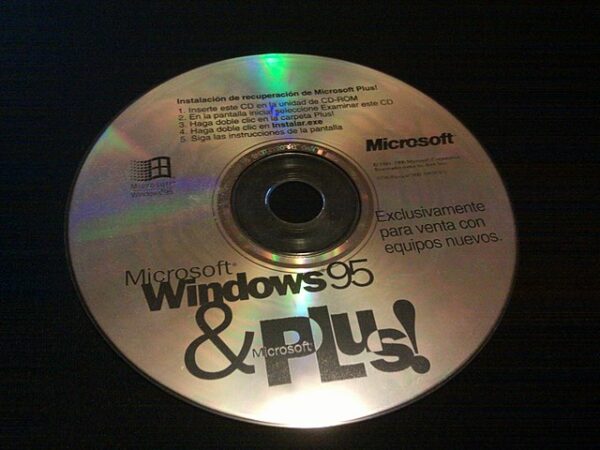On August 24th, 1995, people lined up outside of Best Buy and other computer stores at midnight to buy the latest in computer programming, and no it wasn’t the next Playstation game or can’t-miss Nintendo system, or the latest iPod. The people were desperate for something bigger: the latest operating system.
Microsoft’s Windows 95 release served as one of the most anticipated software launches of all time. The Verge writes, “Jay Leno helped launch the software alongside Microsoft co-founder Bill Gates, with a lot of jokes and the appearance of the entire Windows 95 development team on stage. It was a huge day for Microsoft with TV commercials blasting the Rolling Stones’ “Start Me Up” with images of the new Start button that we still (just about) use today. Microsoft even hired Jennifer Aniston and Matthew Perry to create an hour-long cyber sitcom all about Windows 95, and the software was so popular that 7 million copies were sold during the first five weeks.
Microsoft had other equally ambitious plans for Windows 95. A new Microsoft Network (MSN) application came bundled with a prominent icon on the desktop. MSN was designed to provide access to email, chat rooms, newsgroups, and the first WWW homepages through a dial-up connection. Microsoft charged a monthly fee to access MSN, and if you used it for more than three hours a month, there were extra charges. It was the early days of the internet and dial-up connections, and MSN now exists as a web service through various tailored apps or a browser.
Microsoft also introduced its first idea of syncing data between multiple machines in Windows 95. The My Briefcase aimed to sync files between a laptop and desktop machine, and in modern releases of Windows, it’s all cloud-powered thanks to Microsoft’s OneDrive storage service. Microsoft even introduced user profile support in Windows 95 to allow multiple family members to sign in and have their own separate profiles with links and applications. If you weren’t happy with all the new features of Windows 95 then you could have purchased Microsoft Plus! for Windows 95 at the time. It included the Internet Jumpstart Kit (an early version of Internet Explorer), theme support, and a number of system utilities. Subsequent updates to Windows 95 also introduced new features before Windows 98 arrived three years later to improve things even more.”
Windows 95’s influence on personal computing extended beyond its technical advancements; its marketing strategy was vital in reshaping the public’s perception of computers. The use of the Rolling Stones’ “Start Me Up” in the advertising campaign was a stroke of genius, capturing the excitement and anticipation surrounding the new operating system. This choice of music, coupled with a visually appealing multimedia CD-ROM that showcased the features of Windows 95, not only made the product more relatable to a wider audience but also helped demystify computers. This approach shifted the narrative from computers being exclusively tools for tech enthusiasts to being accessible and relevant to everyday individuals, sparking a surge in interest and contributing to the mainstream acceptance of personal computing.
The legacy of Windows 95 endures in modern computing environments. Its innovations fundamentally altered the trajectory of operating systems, shaping the conventions we now take for granted. The Start button and Taskbar, introduced in Windows 95, remain core components of today’s Windows operating systems. The concept of multitasking seamlessly integrated into the user experience paved the way for how we manage applications and work processes in contemporary computing. The shift towards 32-bit architecture, improved memory management, and plug-and-play capabilities set a standard for hardware and software interaction that has evolved and improved over subsequent Windows versions.
Windows 95’s impact can also be seen in the broader technology landscape. Its emphasis on user-friendliness and graphical interfaces influenced not only other operating systems but also the development of software applications across various platforms. Moreover, the success of Windows 95 solidified Microsoft’s position as a dominant force in the software industry, allowing the company to invest in further research and development that led to subsequent breakthroughs. In essence, Windows 95’s contributions reverberate through the decades, reminding us that the roots of our modern digital experiences can be traced back to the bold innovations of this iconic operating system.






